1793
Dominique Jean Larrey, Napoleon's chief physician, develops ambulances volantes, horse-drawn wagons to transport injured soldiers from the field during battle.
Dominique Jean Larrey, Napoleon's chief physician, develops ambulances volantes, horse-drawn wagons to transport injured soldiers from the field during battle.
Edward Jenner carries out the first successful smallpox vaccination.
German chemist Friedrich Wilhelm Adam Sertürner isolates morphine from opium.
British obstetrician James Blundell performs the first successful human blood transfusion.
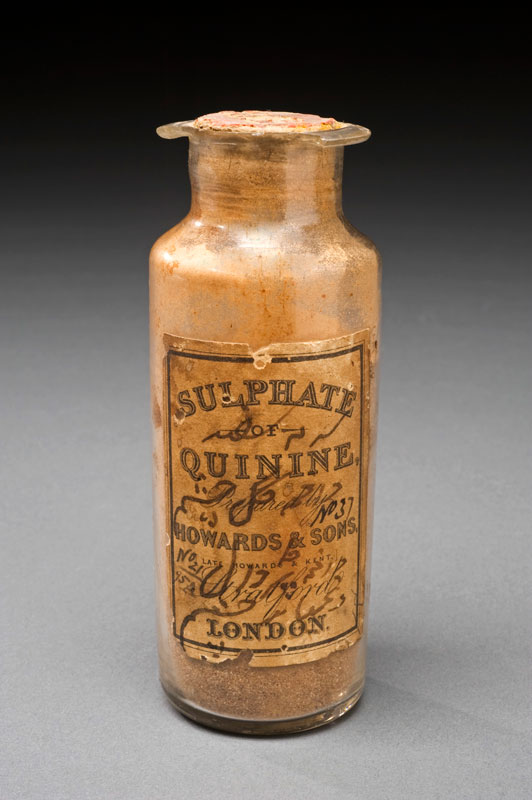
Quinine, a drug used to treat malaria and babesiosis, is first extracted from the bark of a cinchona tree.
French teacher Louis Braille publishes the first book about his raised-dot tactile writing system for blind people.
A major cholera epidemic affects Europe, killing over 50,000 people in Britain.
Codeine - a powerful and relatively safe-to-use analgesic extracted from morphine - is discovered by French chemist Pierre Robiquet.
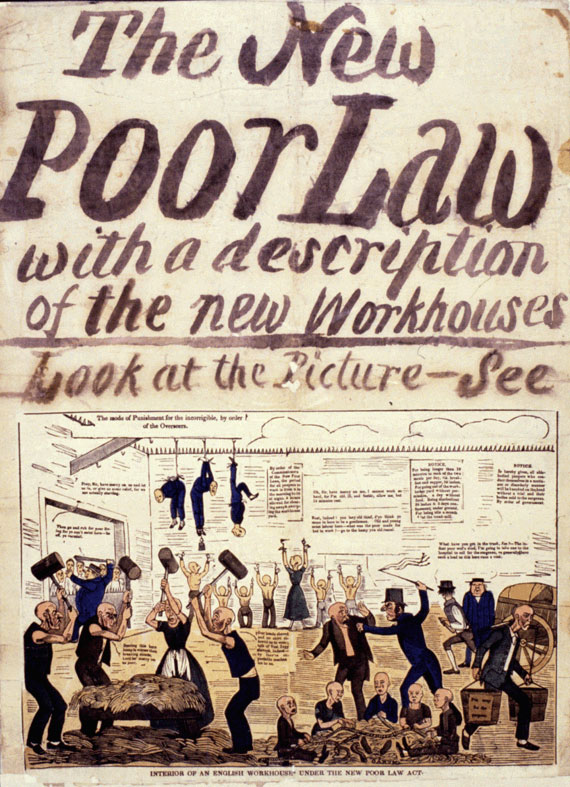
The Poor Law Amendment Act is passed by the British Parliament, a controversial law that restricts the availability of poverty relief to workhouses.
The Vaccination Act makes free vaccination available in Britain.
Diethyl ether is widely used as an anaesthetic.
The first YMCA is founded in London by George Williams in a bid to provide healthy activities for young men in the city.
The use of chloroform as an anaesthetic is demonstrated in London by Scottish obstetrician, James Y. Simpson.
Florence Nightingale spends three months of training with Lutheran deaconesses in Kaiserswerth-am-Rhein. Her first published work, on the treatment of the sick at the institution, is issued anonymously later in the year.
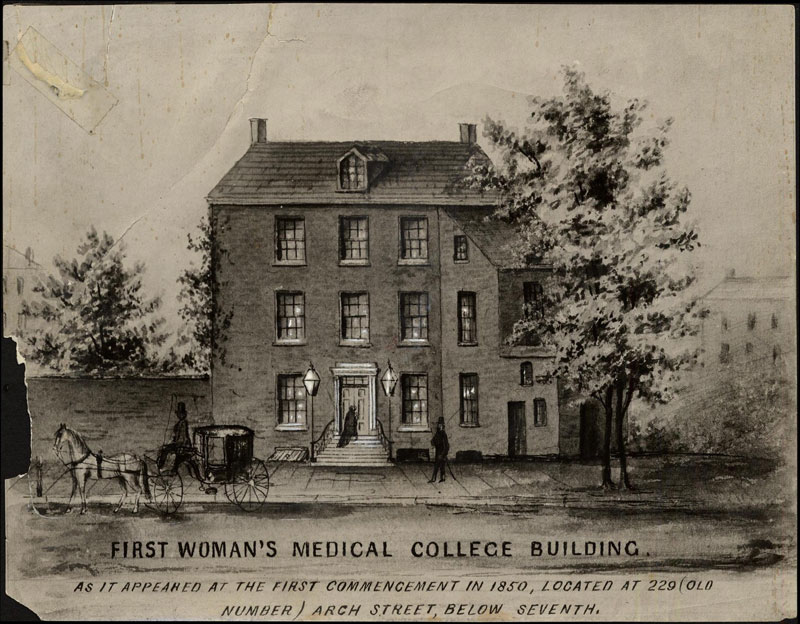
Foundation of the Female Medical College of Pennsylvania in Philadelphia, the first medical college in the world to grant degrees to women.
Plaster of Paris is first used for medical casts by Dutch army surgeon Antonius Mathijsen.
Foundation of the Free Cancer Hospital in London (now known as the Royal Marsden NHS Foundation Trust), the first specialist cancer treatment and research hospital in the world.
Amid concerns over the weakening of the Ottoman Empire and the potential threat from Russia, tensions grow between Russia and France over the status of Christian minorities in Ottoman territories.
Russia occupies the Ottoman Black Sea principalities of Moldavia and Wallachia. In response, the Ottoman sultan declares war on Russia - effectively launching the Crimean War.
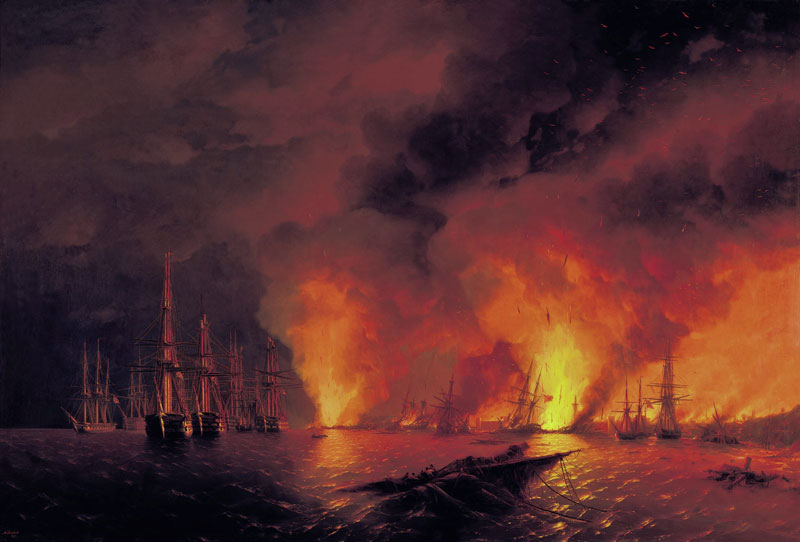
The Battle of Sinop takes place when the Russian fleet destroys a patrol squadron of Ottoman ships while they were in port, causing outrage in Britain and France, who send their warships into the Black Sea in support of the Ottomans.
The syringe is invented by Charles Gabriel Pravaz and Alexander Wood.
Florence Nightingale is appointed Superintendent of the Institution for the Care of Sick Gentlewomen in London.
Britain and France declare war on Russia in support of the Ottoman Empire.
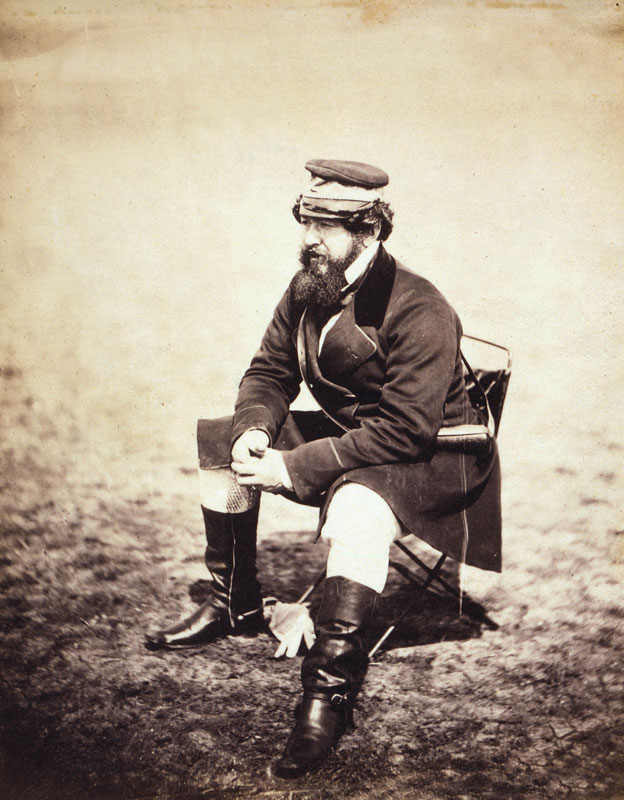
Journalist William Howard Russell is sent by The Times to the Crimea as one of the world's first war correspondents. His accounts would prove influential in raising awareness of the conditions endured by troops.
The Battle of Balaclava takes place during the Allied siege of Sebastopol. It is best remembered for the ill-fated Charge of the Light Brigade into Russian guns.
Florence Nightingale travels to the Crimea with 38 nurses. Appalled by the poor medical facilities available at Scutari, she writes to the The Times exhorting the government to find a solution.
During an outbreak of cholera in London, physician John Snow challenges the popular miasma theory that disease is spread by "bad air", suggesting instead that contagion is caused by contaminated water supplies.
The British establish the Grand Crimean Central Railway to support the siege of Sebastopol. The railway was used to run what is thought to be the world's first hospital train, transporting the sick and injured from Balaclava.
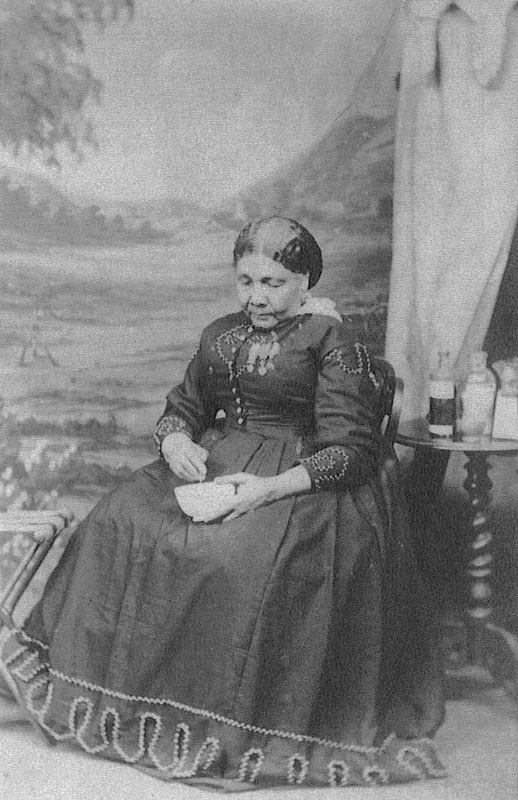
British-Jamaican nurse, Mary Seacole, establishes her 'British Hotel' in the Crimea to provide food and nursing for sick and convalescent soldiers.
The Russians abandon Sebastopol after a year of siege.
The British government commissions Isambard Kingdom Brunel to develop a prefabricated hospital to be shipped to the Crimea and assembled there. Set up at Renkioi, the hospital treats 1,300 soldiers and has a lower death rate than other military hospitals.
The British Sanitary Commission is sent to Scutari at the request of Florence Nightingale.
Florence Nightingale becomes very ill after contracting what is thought to have been Crimean fever.
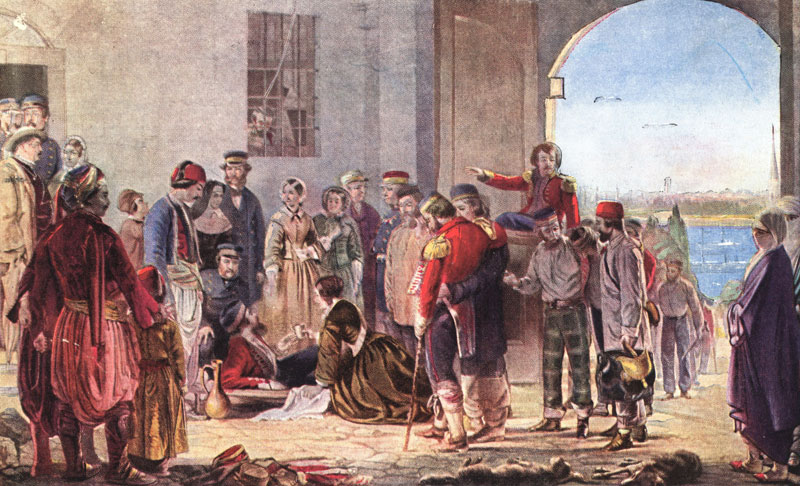
The summer death rate among soldiers at Scutari falls from 40% to 2.2% as a result of improvements to hygiene under Florence Nightingale's administration.
The Crimean War is ended by the signing of the Treaty of Paris.
The Nightingale Fund for Nursing charitable organisation is founded in Britain to commemorate Nightingale's work in the Crimean War.
The germ theory of the spread of disease is developed by Louis Pasteur.
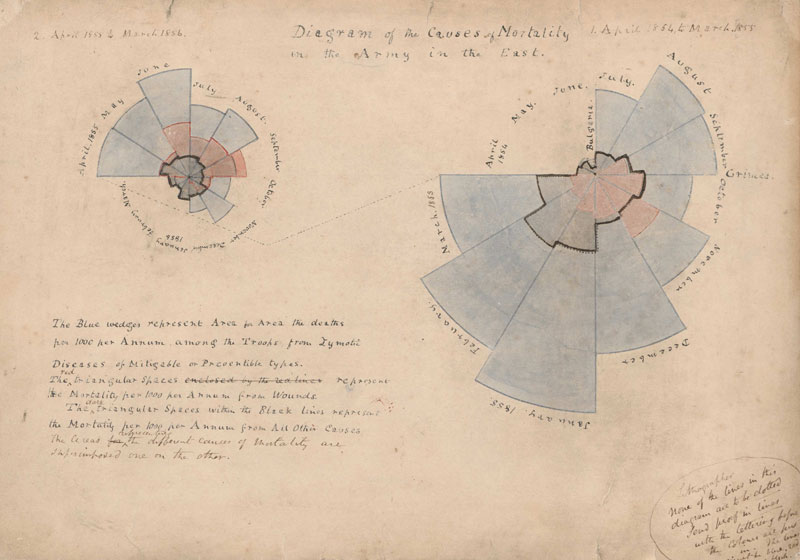
At Nightingale's instigation, a royal commission for the reform of the Army Medical Service is established. She prepares her own report into army mortality but it is never published.
Rudolf Virchow's Cellular Pathology is published, leading to the widespread recognition of cell theory and the development of modern pathology.
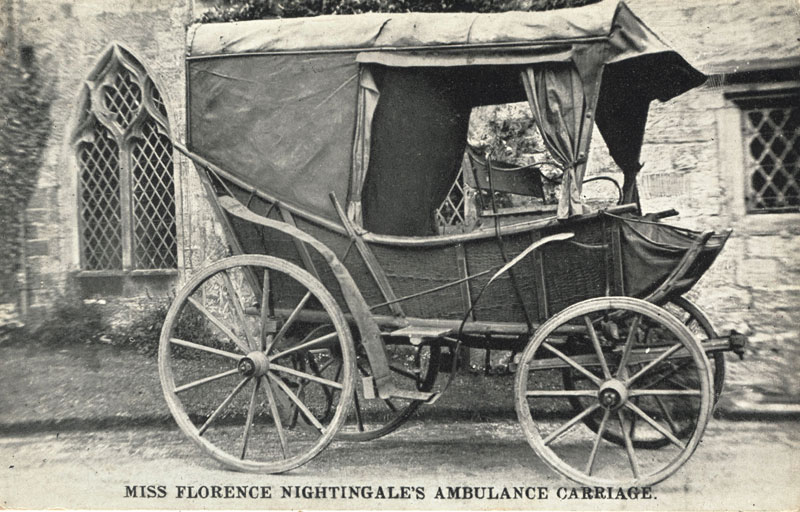
Dr I. Moses of New York proposes a design for a four-wheeled ambulance wagon to carry wounded soldiers away from the battlefield. Similar ambulances would be first used during the American Civil War.
Nightingale outlines her philosophy in Suggestions for Thought, an exposé on religion, and publishes Notes on Hospitals and Notes on Nursing.
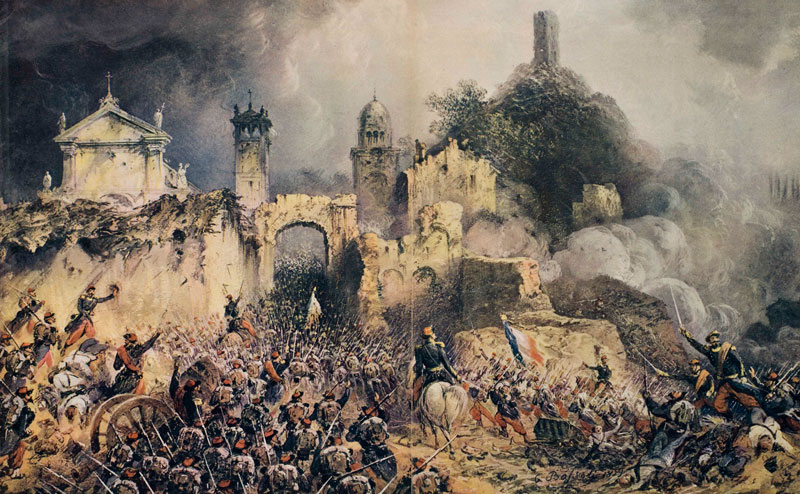
Swiss businessman Henry Dunant conceives the idea for the Red Cross Society while organising the relief effort during the aftermath of the Battle of Solferino.
The National Hospital for the Paralyzed and Epileptic is founded in London as the first hospital in the world to specialise exclusively in the outpatient treatment of epilepsy.
Abraham Lincoln is elected the 16th President of the United States.
The Nightingale Training School is founded at St Thomas' Hospital in London for the training of nurses.
HMS Melbourne and HMS Mauritius, the first hospital ships equipped with medical facilities, provide services to the British expedition to China.
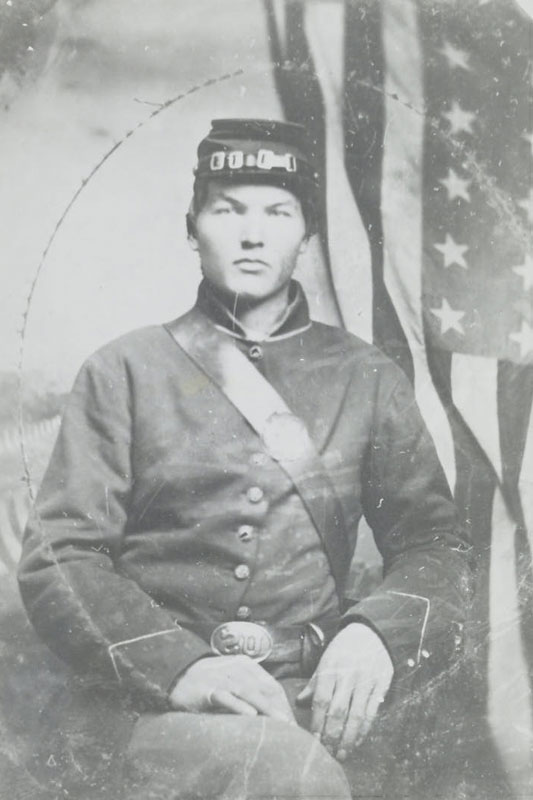
The American Civil War breaks out following the secession of eleven slave-holding southern states to form the Confederate States of America, with Jefferson Davis as their President.
Trauma surgeon Dr Samuel D. Gross produces A Manual of Military Surgery to provide guidance on battlefield surgery for doctors during the war.
Death of Sidney Herbert, a confidant and supporter of Florence Nightingale who worked with her for sanitation reform and was instrumental to her fame.
The United States Sanitary Commission is established.
Dorothea Dix is appointed Superintendent of Female Nurses in the North. She is later awarded two national flags in recognition of her service.
After the First Battle of Bull Run, Sally Louisa Tompkins opens a hospital for soldiers in Richmond, VA, later becoming the only woman officially commissioned in the Confederate Army.
James Edward Hanger, the first recorded amputee of the American Civil War, designs a new prosthetic limb and is commissioned by the Confederate government to develop prostheses for veterans.
Though there is no conclusive victory, the Battle of Antietam proves pivotal for the Union.
French surgeon Auguste Nélaton invents a porcelain-tipped probe to locate bullets lodged in gunshot wounds. His device is used to successfully treat Italian general Giuseppe Garibaldi.
After being struck and captured by the Union Army, the Confederate steamboat Red Rover is converted and relaunched as the U.S. Navy's first hospital ship.
New York surgeon Gurdon Buck performs pioneering facial reconstruction on a badly wounded Union soldier during the American Civil War. He later becomes known as the father of plastic surgery.
Abraham Lincoln issues the Emancipation Proclamation, freeing all slaves in the Confederacy, though not in the Northern states.
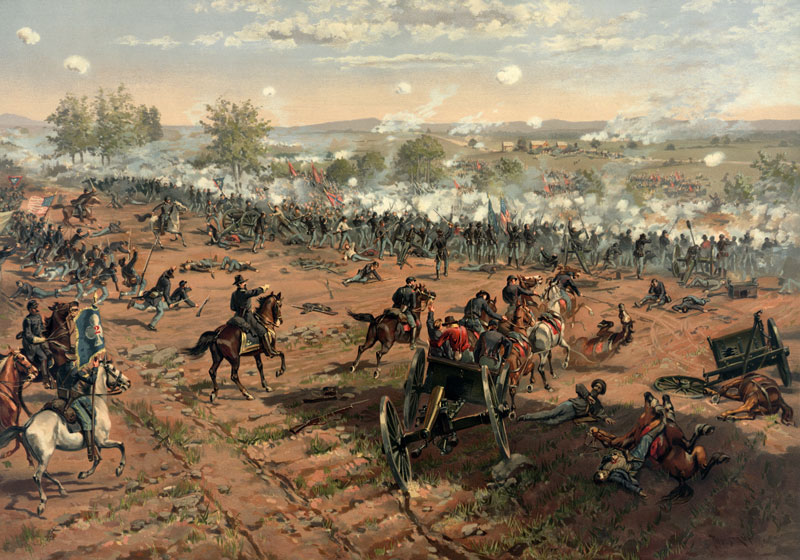
The Battle of Gettysburg, the bloodiest engagement of the entire Civil War, takes place and results in a decisive Union victory.
Opening of the Royal Victoria Hospital in Netley, Hampshire - one of the first purpose-built military hospitals in Britain.
The report of the Royal Sanitary Commission into Indian sanitation is issued, influenced by Florence Nightingale's detailed statistical research.
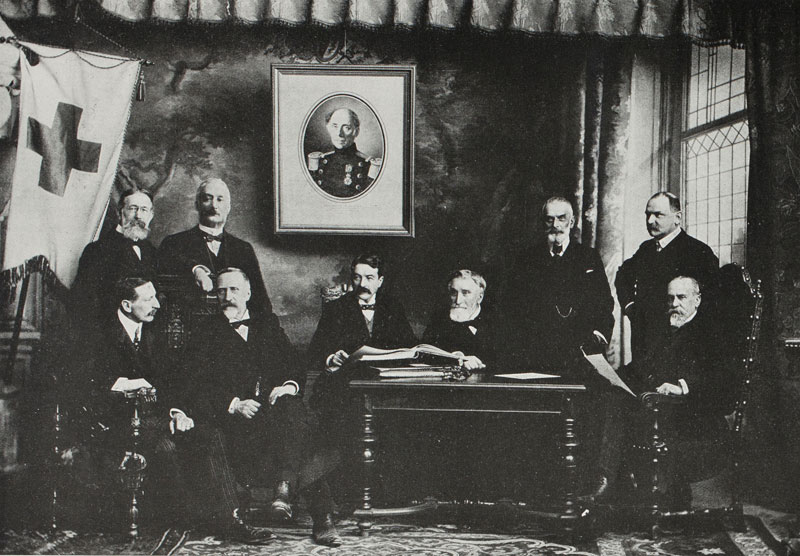
The International Committee for Relief to the Wounded is founded in Geneva by Henry Dunant, Gustave Moynier, Louis Appia, Théodore Maunoir and Guillaume-Henri Dufour. At an international conference later that year, the committee adopts the red cross on a white background as its emblem and establishes national committees for the relief of military wounded.
At a conference in Geneva, representatives of 12 states sign the first Geneva Convention "for the Amelioration of the Condition of the Wounded in Armies in the Field" - the first international treaty to guarantee the treatment of sick and wounded soldiers.
Enactment of the first Contagious Diseases Act in Britain, which forces women suspected of prostitution near army camps and naval ports to undergo regular physical examinations for venereal disease.
Clara Barton establishes the Missing Soldiers' Office in Washington, D.C.
By the end of the American Civil War, more than 80,000 Union soldiers have died of dysentery.
Abraham Lincoln is assassinated by John Wilkes Booth, a Confederate sympathiser. He is succeeded by Andrew Johnson.
The Thirteenth Amendment to the United States Constitution, abolishing slavery, is ratified by Congress.
At the invitation of General Sherman, Mary Ann Bickerdyke rides at the head of the Grand Review of the Armies to mark the end of the Civil War. Supported by the Sanitary Commission, "Mother" Bickerdyke built 300 hospitals during the war and treated the wounded on 19 battlefields.
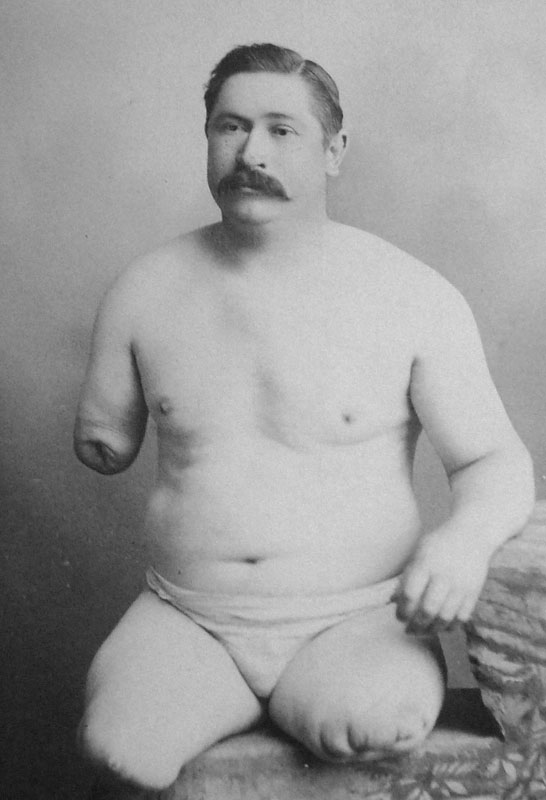
James Buckner Luckie performs the first successful triple amputation in the United States.
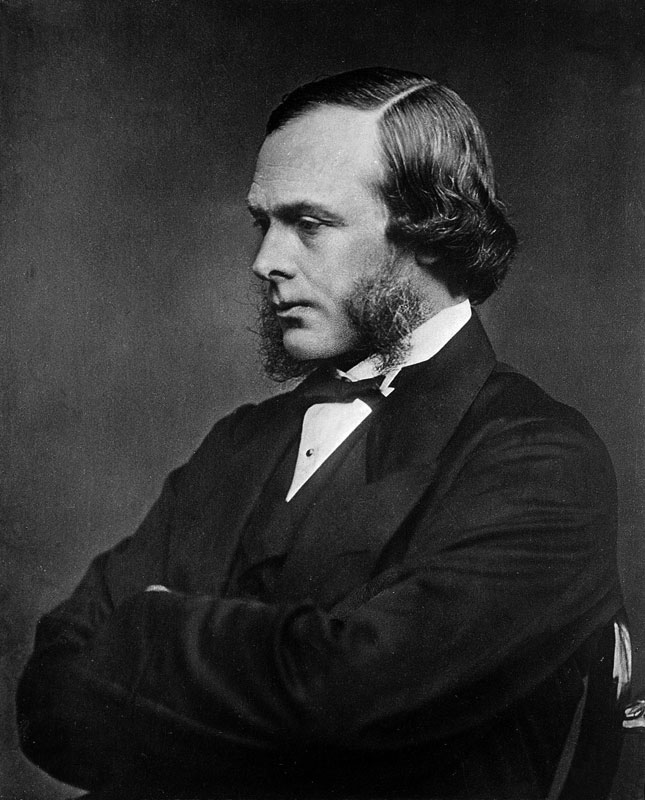
British surgeon Joseph Lister, a pioneer in the use of antiseptic chemicals to prevent the infection of wounds, publishes his influential paper Antiseptic Principle of the Practice of Surgery.
Nightingale is invited to serve on the board for the National Society for Women’s Suffrage. Although she initially declines the invitation, she joins the Society the following year.
The first International Conference of the Red Cross is held in Geneva and is attended by nine governments and sixteen National Committees.
Ellen Ranyard, founder of the London Bible and Domestic Female Mission, establishes the first district nursing scheme.
After Sir Henry Parkes requests Nightingale-trained nursing staff in New South Wales, Florence Nightingale sends Lucy Osburn and four Nightingale nurses to Sydney Infirmary.
The second International Conference of the Red Cross is held in Berlin. Further conferences take place in Geneva (1884), Karlsruhe (1887), Rome (1892) and Vienna (1897).
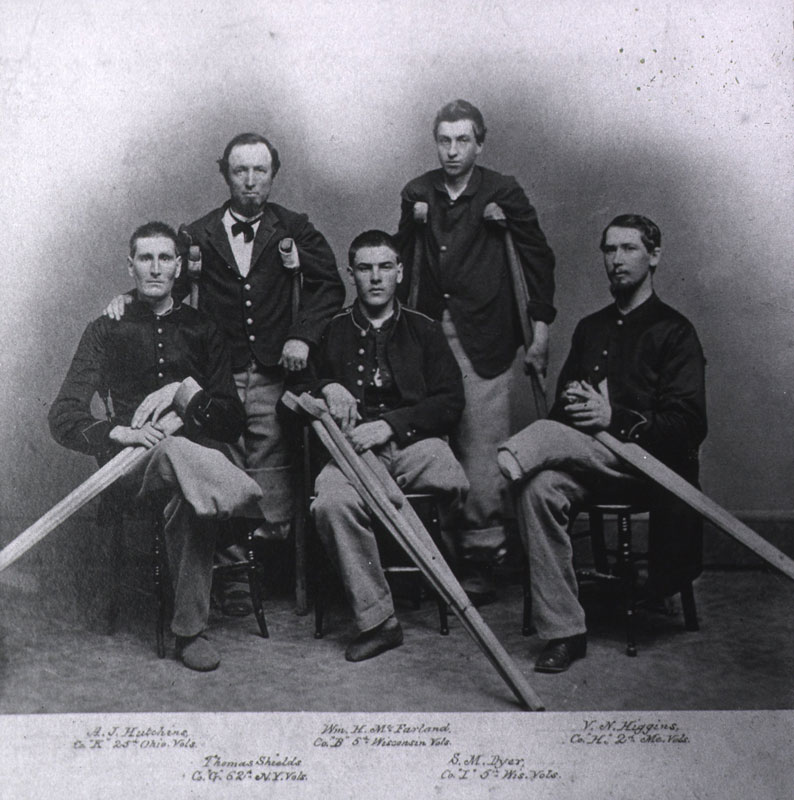
Publication of The Medical and Surgical History of the War of the Rebellion, 1861-65, a six-volume compendium of military medicine during the American Civil War.
Prussian military surgeon Friedrich von Esmarch introduces formalised training in "erste Hilfe" (first aid) for soldiers in the Franco-Prussian War.
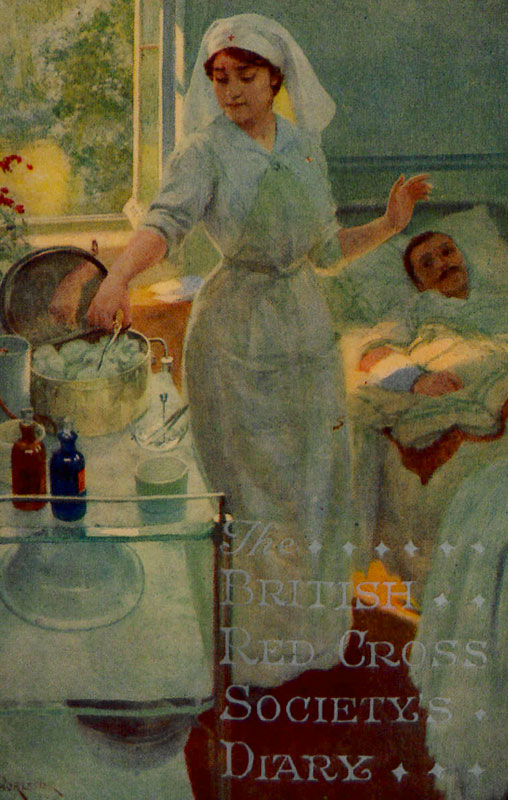
The British Red Cross Society is formed under its original name as the British National Society for Aid to the Sick and Wounded in War.
Nightingale publishes Introductory Notes on Lying-in Hospitals and Proposals for the Training of Midwives.
Nightingale is awarded the Prussian Cross of Merit for her role as an advisor during the Franco-Prussian War (1870-71).
Linda Richards becomes one of the first trained nurses in America when she graduates from the New England Hospital for Women and Children Training School for Nurses.
The first nursing school in the United States to be based on Florence Nightingale's principles of nursing is established at Bellevue Hospital, New York City.
British nurse Sister Henrietta Stockdale establishes the first training school for nurses in South Africa at Carnarvon Hospital, Kimberley.
The International Committee for Relief to the Wounded becomes the International Committee of the Red Cross (ICRC).
The Nightingale Fund begins supporting the training of district nurses.
The St. John Ambulance Association is established by the Venerable Order of Saint John to provide instruction in first aid to industrial workers.
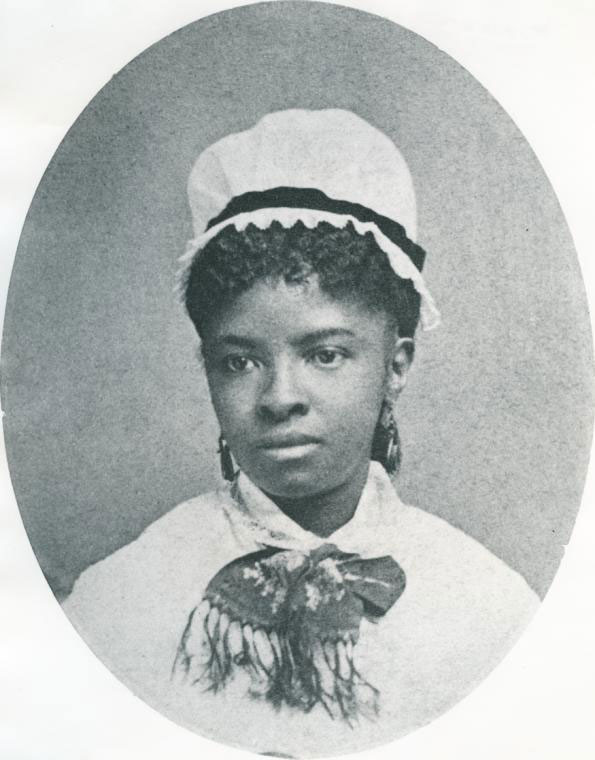
Mary Eliza Mahoney becomes the first African-American professionally-trained nurse.
Scottish surgeon William Macewen becomes the first to successfully locate (and then remove) a brain tumour through clinical examination.
German surgeon Ludwig Rehn carries out the first thyroidectomy.
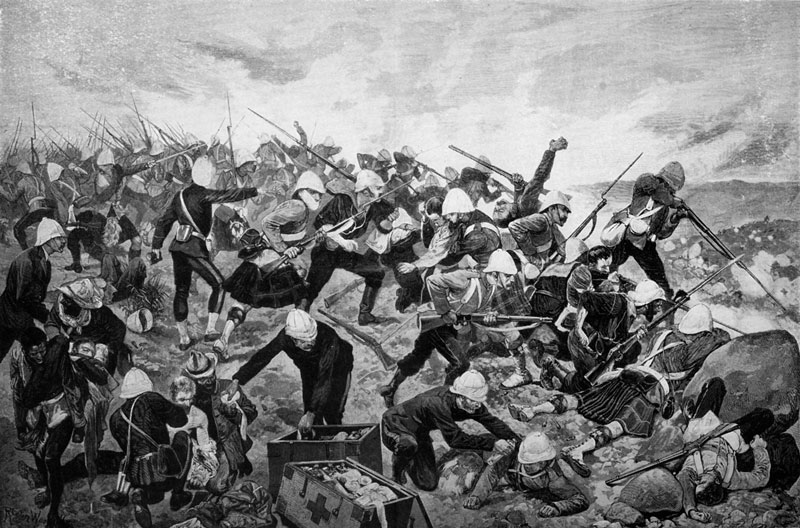
The First Anglo-Boer War is fought between Britain and the South African Republic. The conflict ends in March 1881 with the defeat of the British and the signing of the Pretoria Convention.
Louis Pasteur develops a vaccine for anthrax.
The Royal Army Nursing Corps is established, the first major step towards a regular, uniformed Army nursing service. However, nursing numbers are restricted and no provisions are made for increasing them during major conflicts.
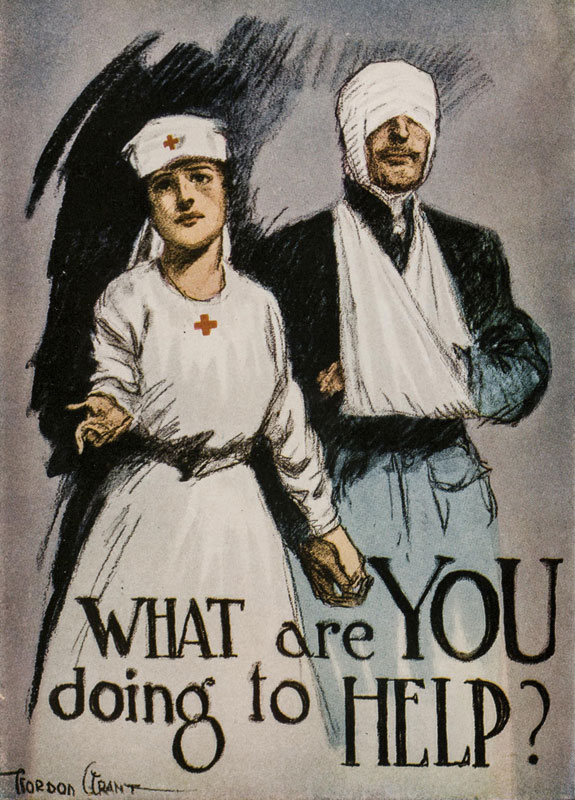
The American Red Cross is founded by Clara Barton.
The first vaccine for rabies is developed by Louis Pasteur. In the same year, Robert Koch discovers the bacillus responsible for tuberculosis, but is ultimately unable to produce an effective treatment.
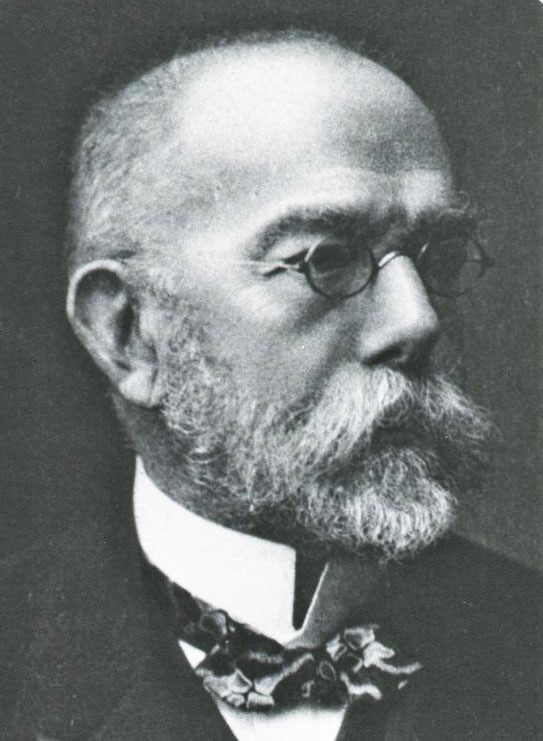
Robert Koch identifies Vibrio cholerae as the bacterium responsible for cholera, paving the way for the development of vaccines.
German Chancellor Otto von Bismarck launches the first public healthcare service in modern history through the enactment of the Sickness Insurance Law.
Cocaine is first used as a local anaesthetic for eye surgery by Austrian ophthalmologist Karl Koller.
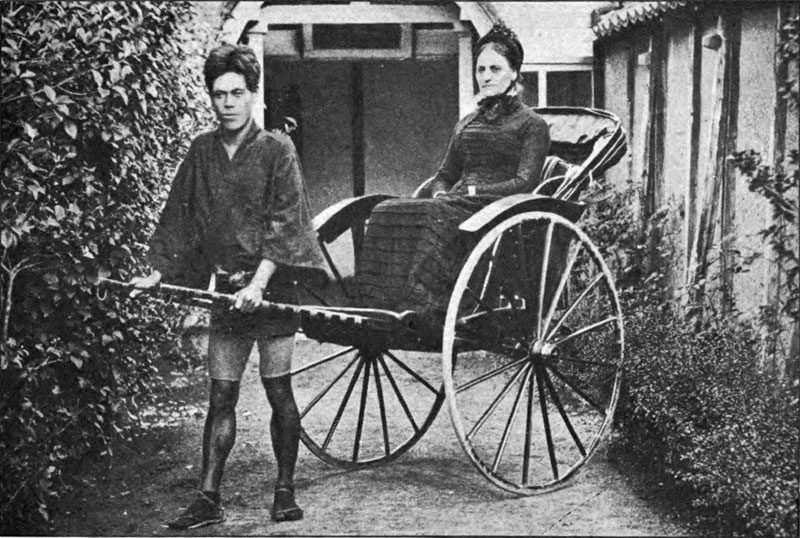
Linda Richards helps establish Japan's first nurse training programme at Doshisha Hospital, Kyoto.
The first regular nursing training institution in India is established in Bombay.
First publication of The Nightingale, the first nursing journal in the United States.
Sophia B. Jones opens the first nursing training programme specifically for African-Americans at Spelman College, Georgia.
Antifebrin is introduced into medical practice as an analgesic.
The blown-glass contact lens is developed by German ophthalmologist Adolf Gaston Eugen Fick.
The British Nurses' Association is founded with the aim of establishing a national register of qualified nurses. Florence Nightingale voices her opposition to what she considers to be a flawed registration system.
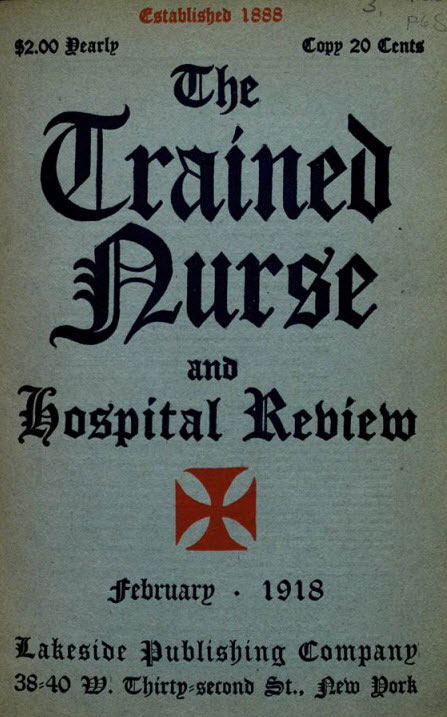
First publication of The Trained Nurse and Hospital Review in Buffalo, New York.
Johns Hopkins Hospital is founded.
Emil von Behring discovers a diphtheria antitoxin.
German surgeon Themistocles Glück develops early joint replacements using ivory.
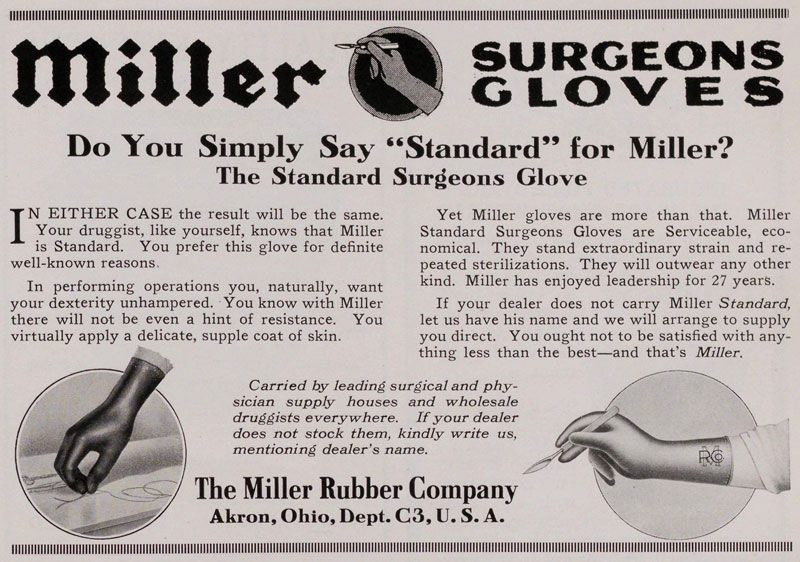
The Goodyear Rubber Company produce the first latex medical gloves at the instigation of William Halsted, a surgeon at Johns Hopkins.
African-American surgeon Daniel Hale Williams founds Provident Hospital in Chicago, Illinois, the first non-segregated hospital and medical training school in the United States.
X-rays are produced and detected by German physicist Wilhelm Röntgen.
Norwegian surgeon Axel Cappelen performs the first successful cardiac surgery.
The first vaccine for typhoid fever is developed.
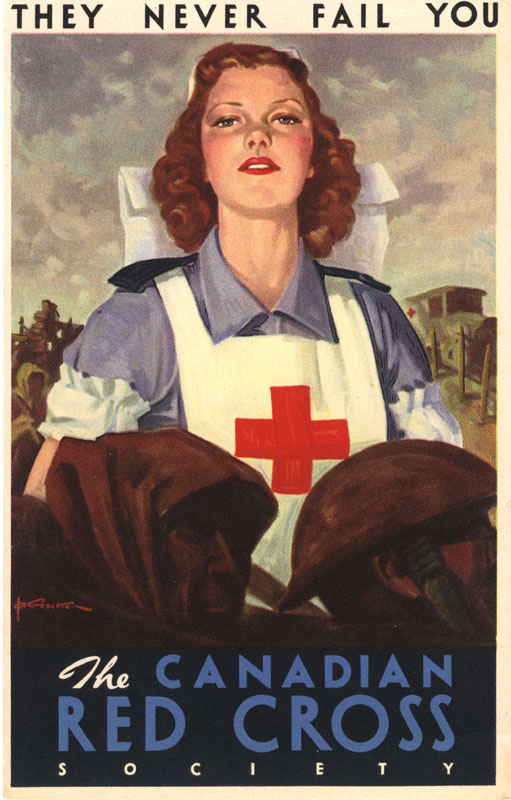
Foundation of the Canadian Red Cross as an affiliate of the British Red Cross Society.
The first vaccine for bubonic plague is developed.
The Spanish-American War takes place as a result of United States involvement in the Cuban War of Independence.
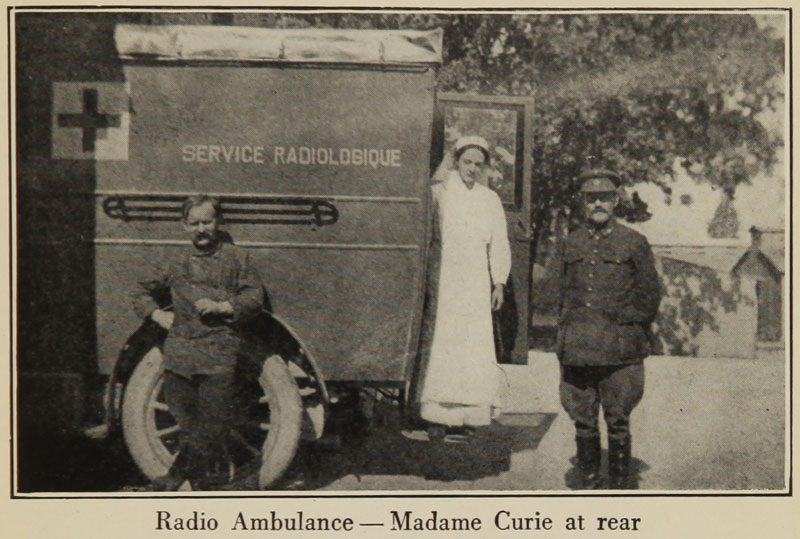
Transportable X-ray machines are used for the first time in the Greco-Turkish War, allowing for bullets and shrapnel to be located and removed from injured soldiers more easily and reducing the need for amputation.
The Royal Army Medical Corps is created, improving efficiency by administering the delivery of military medical services under a single organisation.
German chemicals firm Bayer develop and begin production of aspirin.
Signing of the First Hague Convention, the first multilateral treaty to address the conduct of warfare.
Foundation of the International Council of Nurses.
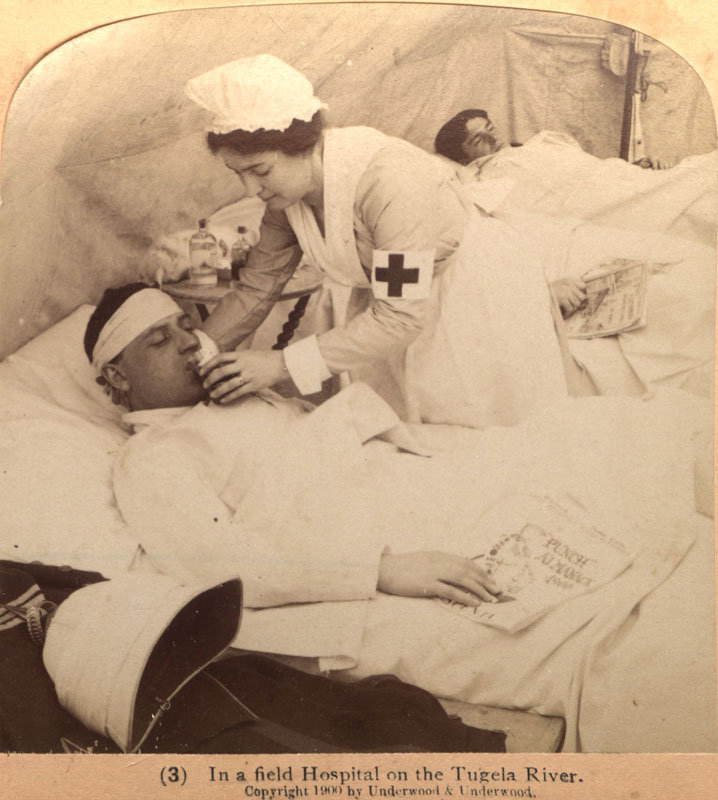
The Second Anglo-Boer War begins when the South African Republic and Orange Free State declare war on the British Empire. Nurses from Canada, Australia and New Zealand travel to South Africa to serve as private citizens or with the British nursing forces.
The first motorised ambulance enters service at the Michael Reese Hospital in Chicago.
American surgeon Charles H. Cargile pioneers the use of Cargile membrane in abdominal surgery.
During the Second Anglo-Boer War, concentration camps are used by the British to intern Boer women and children. 26,000 prisoners die due to inadequate nutrition, shelter and healthcare.